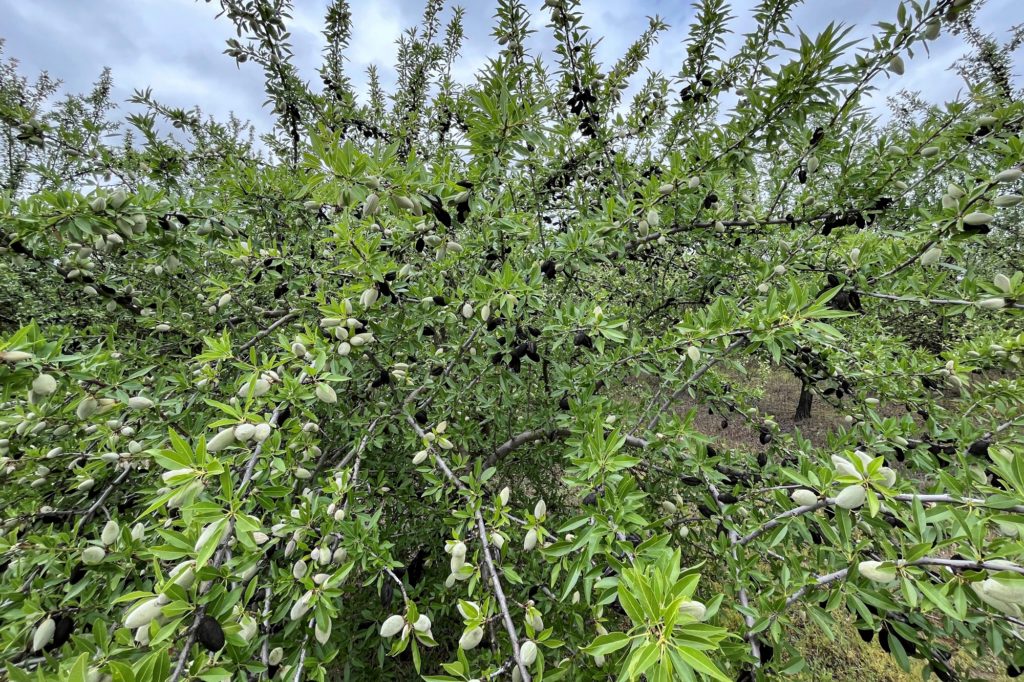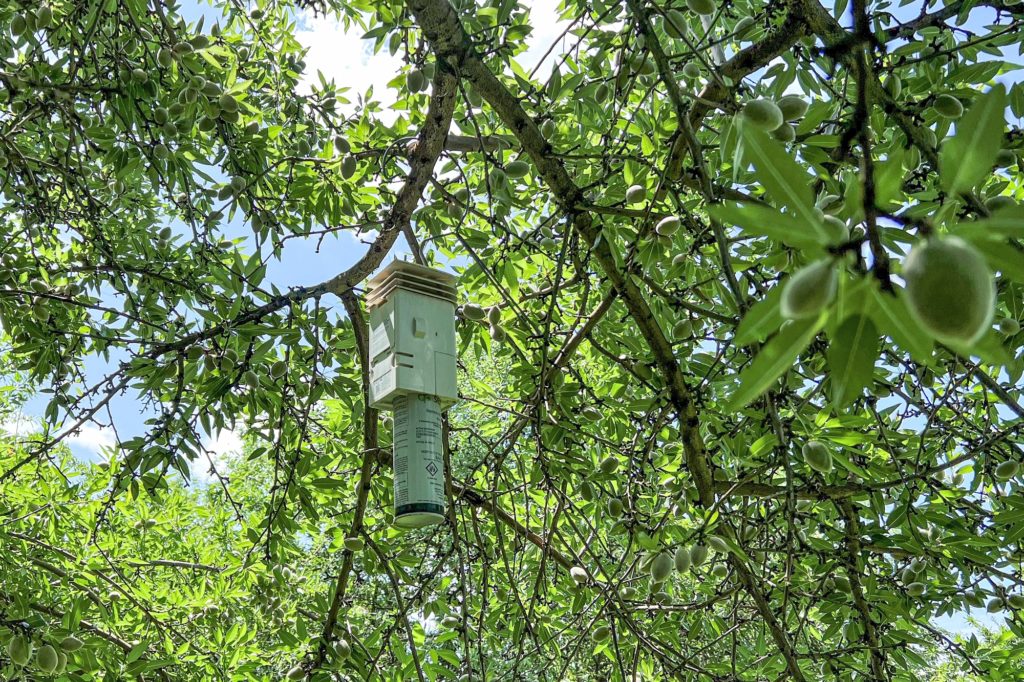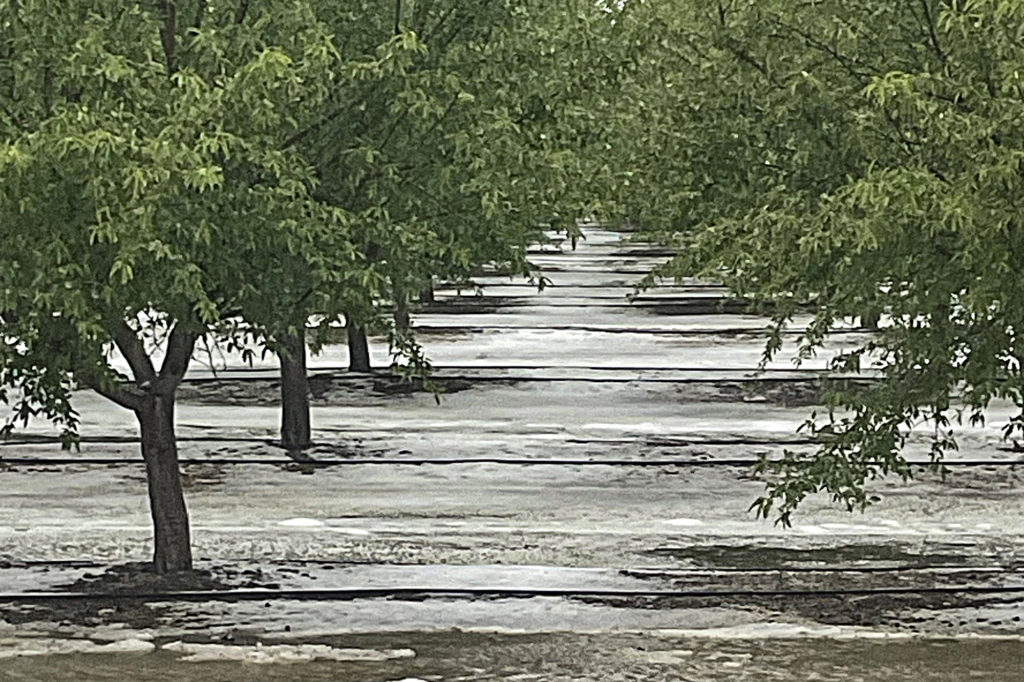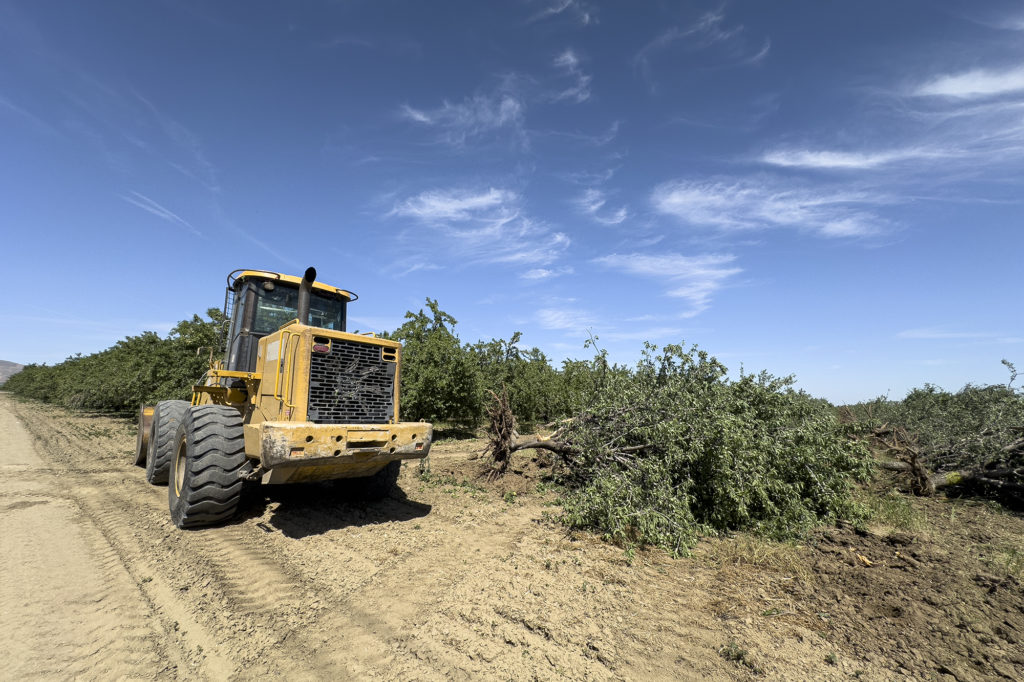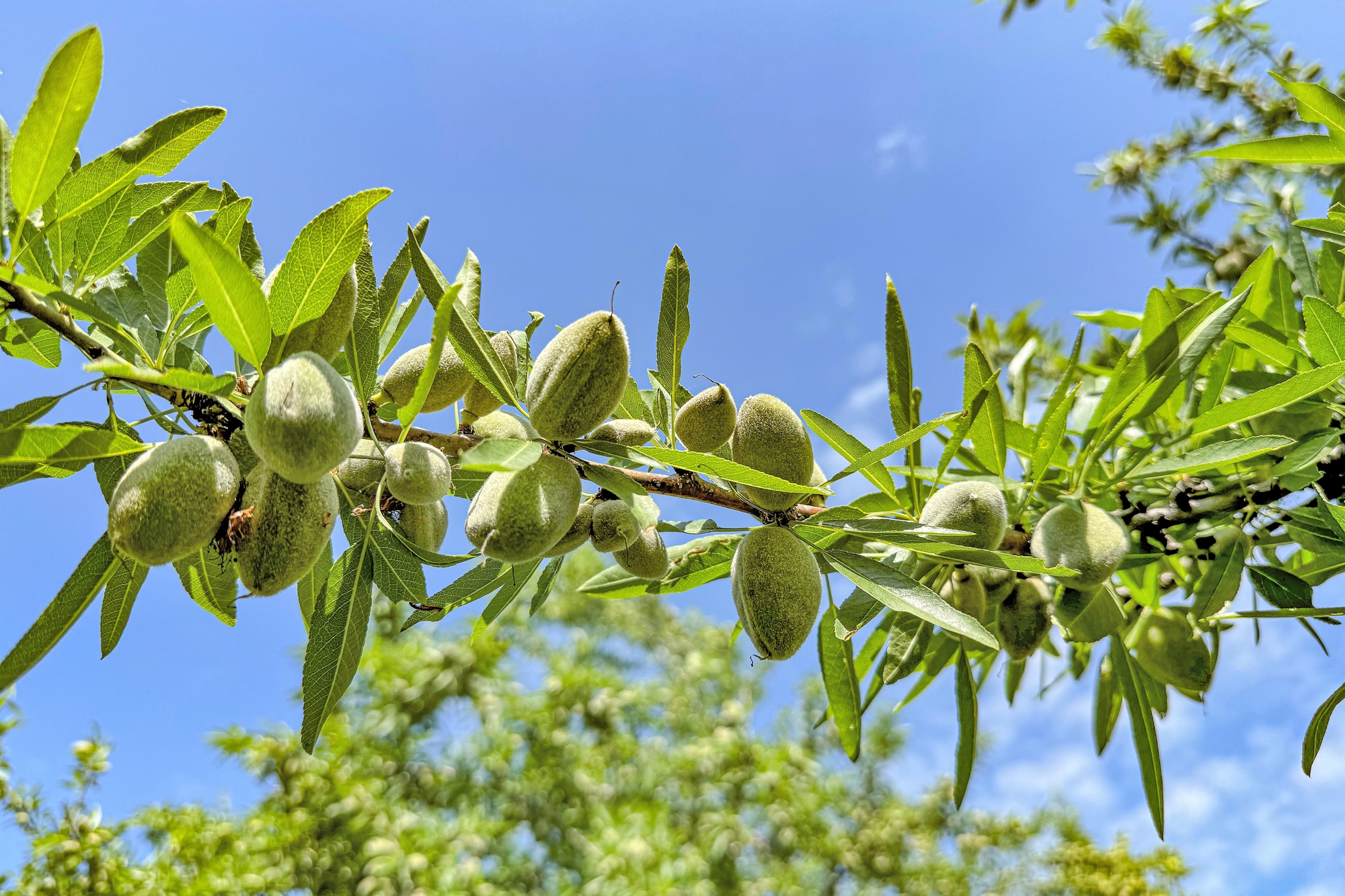
This report covers the conditions and activities observed from Monday, April 1, 2024, through Sunday, April 28, 2024. The next scheduled report will be posted on Monday, June 3, 2024. In the event of any significant occurrences prior to that date, this site will be updated as soon as possible.
California’s Central Valley experienced a wide range of weather conditions during April, with warm temperatures and clear skies in contrast to periods of heavy rain, mountain snowfall and the threat of hail. A plot of daily maximum temperatures displays three distinct peaks during the month, when readings climbed into the mid and upper 80’s. Alternatively, temperatures dipped into low to mid 50’s with the passage of three significant springtime storm systems. With the exception of areas of the San Joaquin Valley where low temperatures dipped into the mid-30’s during the first weekend of the month, morning minimum temperatures were reported predominately in the lower 40’s to lower 50’s.
Rainfall totals for the period reached impressive levels, ranging from one-half inch to as much as two inches that was reported in the northern San Joaquin Valley. Growers watched the storm systems carefully during the period, hoping to avoid damage to their trees from gusty winds or crop loss from hail. As shown in the accompanying photo, areas of Colusa County did receive hail early in the month. However, little damage has been reported. Observers in Kern County also reported some trees blown over by the winds.
Growers spent the period working to provide support for the developing crop. Observers have noted orchards with pale green to yellow foliage, signifying poor nutritional status within the trees. In an effort to cut costs, many growers reduced fertilizer applications last year and have been forced to play “catch up” this year. The rainfall received during the month complicated the situation as growers worked to apply fertilizer materials, which are largely applied by injecting into the irrigation water. Many found that they needed to apply fertilizer, but didn’t need to irrigate, opting to run their irrigation systems just long enough to apply the fertilizer and move it into the root zone.
Observers are reporting that the orchards are well into the period when nuts that the trees will not carry to harvest have been sequestered from the flow of nutrients are being shed from the trees. This natural process of selection occurs to greater degree in Carmel, Fritz, Butte, Padre, Monterey, and Independence, while Nonpareil tends to shed less. The degree of shed can be influenced by crop load, nutrient status and weather conditions following the bloom as the new nutlets develop. Essentially, the trees decide what they can carry to harvest given their nutritional status and shed the rest.
Pest management operations intensified during the month as growers began monitoring their orchards for insect pests and worked to control excessive vegetation. Pest Control Advisors are reporting increasing activity in traps designed to monitor flights of adult Navel Orange Worm moths. Observers have reported that many orchards are carrying excessive mummy loads and that the infestation rate within the mummies is also running quite high. As noted in previous reports, the adult moths emerge from the mummy nuts, mate, then return to the mummies to lay their eggs for the next generation. Growers with plantings carrying an excessive number of mummies began treatments during the period targeting the eggs laid on the mummies and the resulting small larvae, in an effort to reduce the number of moths that will survive to infest the crop during the hull split prior to harvest. Stink Bugs and Leaf-Footed Plant Bugs have also been observed and materials for their control may also be included in these treatments where warranted.
Mating disruption or confusion is becoming a more common tool in the effort to manage Navel Orange Worm. Disruption employs devices placed in the orchard canopy to release synthetic pheromones mimicking the “scent” that female moths use to “call” the males for mating. The devices release enough pheromone to overpower or confuse the males, inhibiting their ability to find the female, thus reducing the number of successful mating’s, and the population within the orchard.
Growers also worked around the rain events to mow excessive vegetation within the orchards and complete treatments to control the fungal diseases Scab and Leaf Rust. These treatments must be completed prior to infection to be effective. The rainfall received during the month provides the environment needed for spore germination. Left unchecked, these diseases can lead to defoliation later in the season.
Orchard removal operations continue in all areas. While the majority of orchards being pulled are at the end of their productive life, observers have noted plantings as young as six years old being removed or prepared for removal. Many growers are reporting that they will be delaying replanting orchards for a year or two, opting to plant other crops in the interim. Observers have noted that many of the orchards being removed in the southern San Joaquin Valley and along the west side will not be replanted.
By Mel Machado, Vice President of Member Relations
Photos By: Christine Ivory, Nicole Jansen, Anthony Scudder, KC Clendenin, Tim Weststyen (PCA), and Mel Machado



